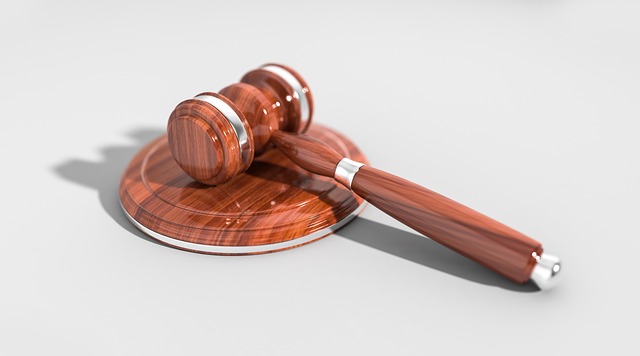Assess software needs and hardware requirements for efficient case management in a law office. Choose monitors with high resolution, adjustable stands, and ergonomic features to reduce eye strain. Prioritize powerful CPUs, ample RAM, and dedicated graphics cards for smooth performance. Invest in durable, ergonomically designed equipment with long-term sustainability in mind. Budget strategically by assessing needs, shopping for quality, and leveraging sales events or leasing options.
In the digital age, choosing the right computers and monitors is essential for modern law offices. This comprehensive guide navigates the process of selecting equipment tailored to legal practice needs. From software compatibility and efficient case management to visual clarity and ergonomic design, we explore key factors. Understanding these aspects ensures your law office gains a competitive edge with high-quality, durable law office equipment. By following our expert tips, you’ll make informed decisions that enhance productivity and support your legal team’s success.
- Assess Legal Practice Needs: Software Requirements and Compatibility
- Choose Right Computer Specifications for Efficient Case Management
- Consider Monitor Sizes and Resolutions for Optimal Visual Clarity
- Evaluate Ergonomics and Longevity of Law Office Equipment
- Budgeting Tips for Acquiring High-Quality Legal Practice Computers and Monitors
Assess Legal Practice Needs: Software Requirements and Compatibility
When setting up or upgrading a legal practice, assessing your software needs is paramount. Law offices often rely on specialized applications for case management, document preparation, and research, so ensuring your chosen computers and monitors can support these tools efficiently is crucial. Check the hardware requirements of each software program you use regularly to guarantee compatibility. For instance, some programs may demand a minimum CPU speed, specific RAM capacity, or dedicated graphics cards for optimal performance, especially when dealing with complex legal documents or multimedia evidence.
The right monitor plays a significant role in facilitating your work. Consider factors like resolution, color accuracy, and adjustability when selecting monitors. High-resolution displays offer sharper text and images, which is beneficial for reviewing detailed legal documents. Color accuracy is essential for professionals who need to assess fine nuances in colors, such as in the presentation of evidence or contracts with specific branding. Adjustable monitors allow for ergonomic setups, reducing eye strain during long work hours, a common occurrence in law offices.
Choose Right Computer Specifications for Efficient Case Management
When setting up a law office, selecting the appropriate computer specifications is vital for efficient case management. The right hardware and software configurations enable attorneys and legal professionals to streamline tasks, enhance productivity, and maintain organizational integrity. Consider factors such as processing power, memory capacity, storage options, and graphics performance when choosing a computer that aligns with your practice’s needs.
Adequate computer specifications facilitate smooth operation of case management software, document editing tools, and legal research databases. A powerful processor ensures quick data retrieval and analysis, enabling lawyers to review evidence and prepare arguments efficiently. Ample memory and storage space allow for multitasking and the management of large volumes of digital documents, ensuring your law office equipment keeps pace with modern legal practices’ demands.
Consider Monitor Sizes and Resolutions for Optimal Visual Clarity
When setting up your law office equipment, monitor size and resolution play a significant role in ensuring optimal visual clarity. Larger monitors offer a wider field of view, facilitating multitasking and enhancing productivity. However, it’s essential to strike a balance; an overly large monitor can be overwhelming and take up valuable desk space. Standard sizes range from 24 inches to 34 inches, providing ample real estate for multiple applications without sacrificing aesthetics or ergonomics.
For legal practices that require meticulous detail and precision, consider monitors with higher resolutions like QHD (2560 x 1440) or 4K (3840 x 2160). These resolutions deliver sharper text, clearer images, and more precise color reproduction, which is crucial when reviewing documents, viewing evidence, or presenting cases. With these high-resolution displays, even fine lines and details become visible, ensuring no vital information goes unnoticed.
Evaluate Ergonomics and Longevity of Law Office Equipment
When equipping your legal practice, ergonomics and longevity should be top priorities. Law office equipment, particularly computers and monitors, are integral to your day-to-day work, so investing in products designed for comfort and durability is crucial. Look for ergonomic features like adjustable stands, tilt settings, and customizable display heights that align with proper posture guidelines to prevent strain and injury over time.
Consider the overall build quality of the equipment as well. Sturdy construction and high-quality components ensure monitors and computers will stand the test of time, reducing the need for frequent replacements. This not only saves costs but also minimizes waste, making it a responsible choice for any law office looking to create a sustainable workspace.
Budgeting Tips for Acquiring High-Quality Legal Practice Computers and Monitors
Acquiring high-quality computers and monitors for a legal practice can be a significant investment, but there are strategic budgeting tips to help navigate this process efficiently. Firstly, assess your law office’s specific needs. Determine the number of workstations required, considering factors like case volume and the types of tasks performed. This will guide your decision on whether to purchase individual computers or opt for more cost-effective multi-user systems.
When selecting monitors, focus on size, resolution, and ergonomy to reduce eye strain during extended work hours. Look for sales and promotions, especially around back-to-school or holiday periods, as these offer opportunities to find discounted yet reliable equipment. Additionally, explore leasing options for the latest technology, which can free up cash flow and keep your law office equipped with cutting-edge law office equipment without a substantial upfront cost.
When equipping your law office with computers and monitors, a thoughtful selection process is key. By understanding your software needs, assessing hardware specifications, considering visual clarity, prioritizing ergonomics, and planning your budget, you can invest in high-quality legal practice computers and monitors that enhance productivity and efficiency. Remember, the right technology choices for your case management system and visual workspace are vital components of a successful law office.
